Published 31 March 2022 ● Last Updated on 1 April 2022
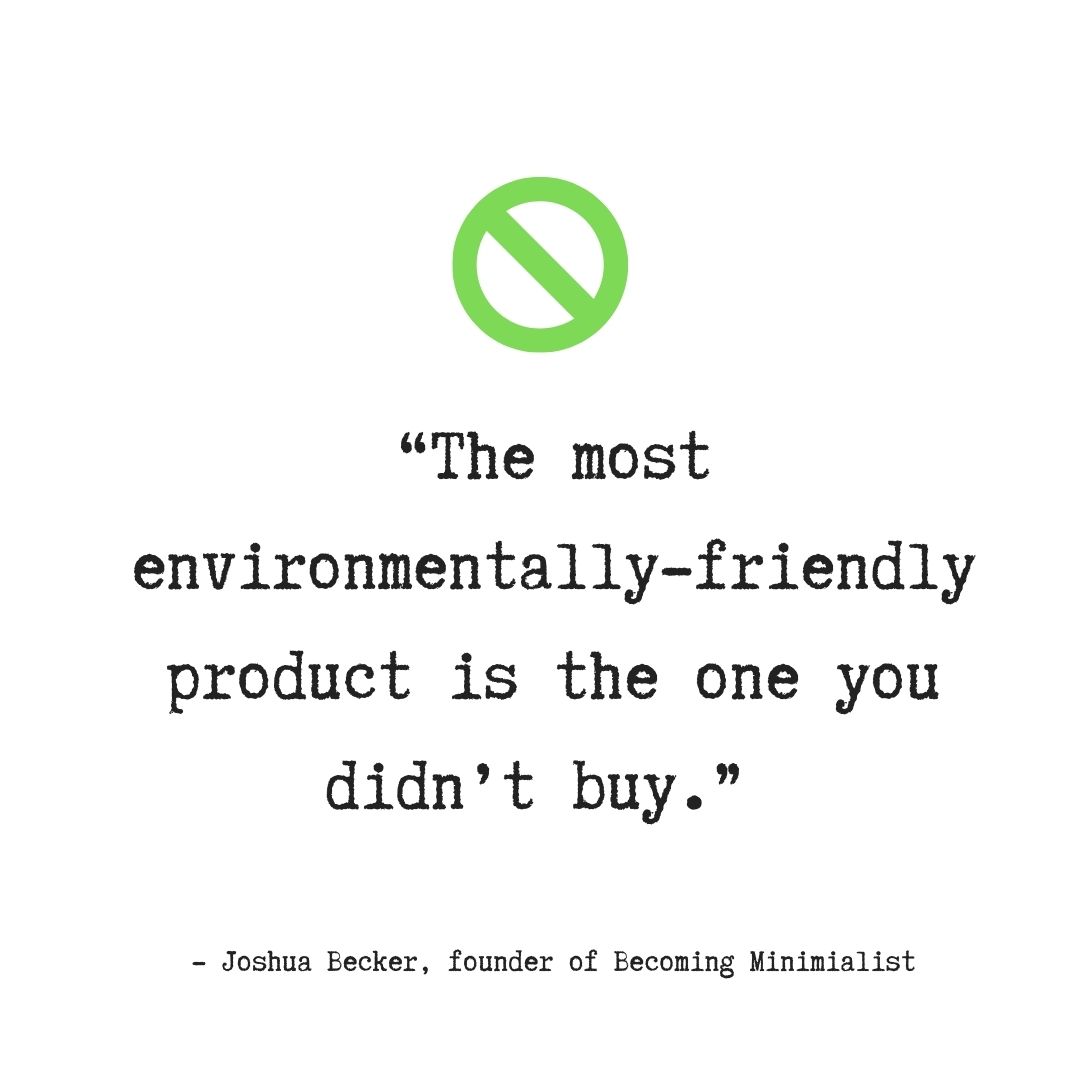
Then came consumerism, with its abundant options, and now we find ourselves lapping up every option available to us. The hitherto seen minimalism is well out of the way, giving way to a steep upsurge in supply of fast fashion as the demand is ever-rising.
Welcome to the ‘Material World’. What you wear, how many times you wear it and how often you shop for more, more or less defines how you are perceived in your peer group. Buy often, don’t repeat your clothes, always appear chic, and you’re a de facto fashionista creating ripples and gaining followers . There is some good news though – a new fashion conscious group of consumers is fast emerging. Better known as the minimalists, these are people doing their bit to lift a little weight off an overburdened planet. They embrace the motto “Less in More” versus the YOLO mentality. They re-wear, they swap, they mend and make do. They recognise that our clothes have a “real cost” which is more than just the attached price tag.
How much does our wardrobe cost the environment?
How much did you pay for the clothes in your closet? Putting a number to this may not be so difficult as you can average it out and arrive at a dollar value. However, there is a cost behind everything in that closet from that little green dress to the skinny jeans to the tank top and even that pair of bunny socks that goes unnoticed by most people – the cost to the environment.
According to figures from the United Nations Environment Programme (UNEP), it takes nearly 4000 liters of water to make a pair of jeans, from the production of the cotton to the delivery of the final product to the store. That equates to the emission of around 33.4 kilograms of carbon equivalent gases.
If that is for just one pair of jeans, imagine the environmental cost for everything in our wardrobes. The fashion industry as a whole is responsible for 10% of annual global carbon emissions, more than all international flights and maritime shipping combined. At this pace, the fashion industry’s greenhouse gas emissions will surge more than 50% by 2030.
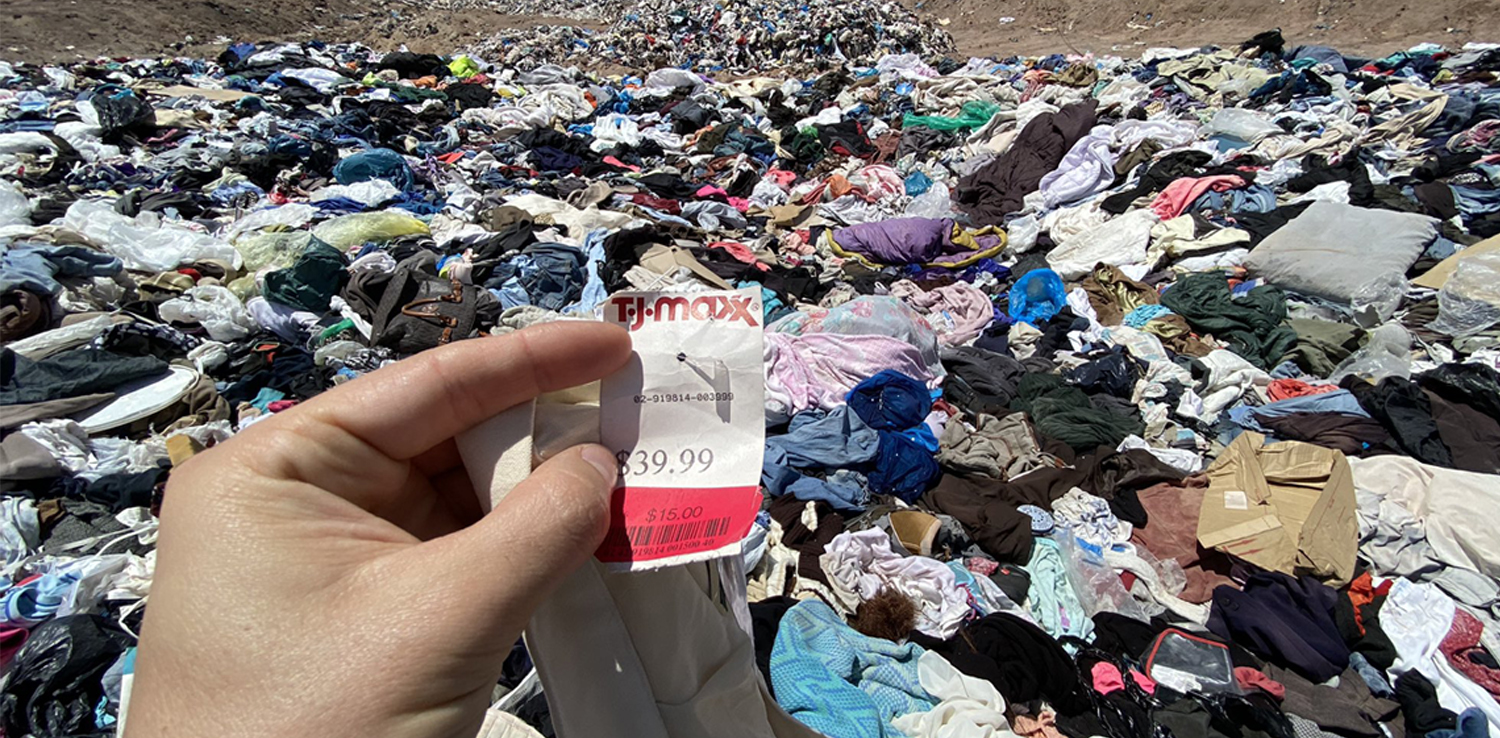
At the same time, with a value of more than 2.5 trillion $USD and employing over 75 million people worldwide ,the fashion industry is an important part of the world economy. The sector has seen spectacular growth over the past decades, as clothing production doubled between 2000 and 2014. While people bought 60% more garments in 2014 than in 2000, they only kept the clothes for half as long.
What’s more, 85% of all textiles go to the landfill each year (UNECE study, 2018), and washing certain types of clothes releases a significant amount of microplastics into the ocean.
With the impact of the fashion industry in terms of pollution, water use, carbon emissions, human rights, and gender inequality increasing, the need for a shift to sustainable consumption of fashion is evident.
Sustainability and Minimalism: Bridging the gap!
While being a minimalist and being sustainable are different, they are yet two faces of the same coin and help achieve a common goal. A big part of sustainability is about using only the resources we need. Minimalism means using less resources – leaving more for others today, and for the future generations to come. When we embrace the principle of less is more, we reduce our possessions, increase their utilization and derive more happiness and satisfaction. Through a minimalist lifestyle, living sustainably becomes ever so easier.
In order to have a more secure world where everyone has an equal go at things, moving towards a minimalist lifestyle is one way of “doing your bit for the planet”! Here are 10 ways that you can start your “minimalistic fashion” journey right away – it’s easy, it’s in your hands and it saves $$.
Change is good – tips to be the change
- Swap don’t shop
You have been asked out for coffee and wondering what to wear. You have repeated what’s in your wardrobe many times over and want a change. Wait, don’t click on that buy button yet. Instead, swap your clothes with one of your friends. It’s such an easy fix to wear something new isn’t it
- Mix and match
Image Credit: Vetta
You’ve been invited to a party and don’t know what to wear? Fret not there is plenty of scope within your wardrobe. Mix and match what you have for that quirky, cool and fashionable look.
- Buyerarchy of needs
A fashionable take on Maslow’s Hierarchy of Needs, ‘Buyerarchy’ by Sarah Lazarovic looks at buying as the last level after all other areas have been tried. The artist created this graphic as a personal learning, after swearing off new purchases for an entire year (this was way before Covid!). The viral image is a great way to look at the options available to us to possess things without buying anew.
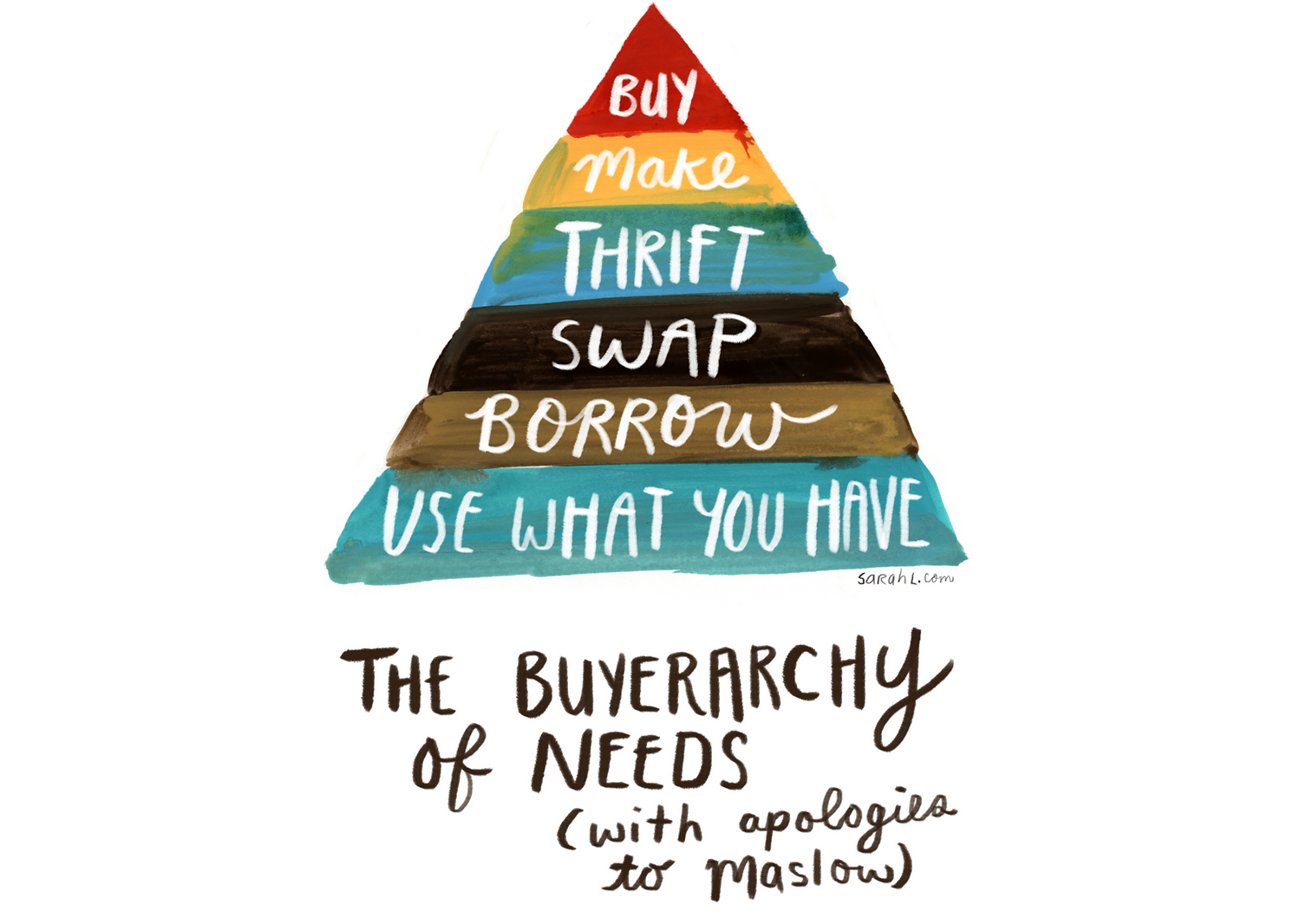
- List don’t lust
When you are out shopping whether it is for groceries or clothes , always carry a list with you. When you have a list, it keeps you rooted and helps ensure you do not go overboard with the purchase. Also never ever go shopping when you are hungry because a hungry mind behaves in weird patterns, and you end up picking more than you need.
- Clearly clear-out
Every month or however often you deem it fit, earmark a day for clearance. Remember hoarding will leave you with no space for anything new, so follow the thumb rule of two out one (or none) in. If you have not used it in three months, you never will.
- Repetition is not sin
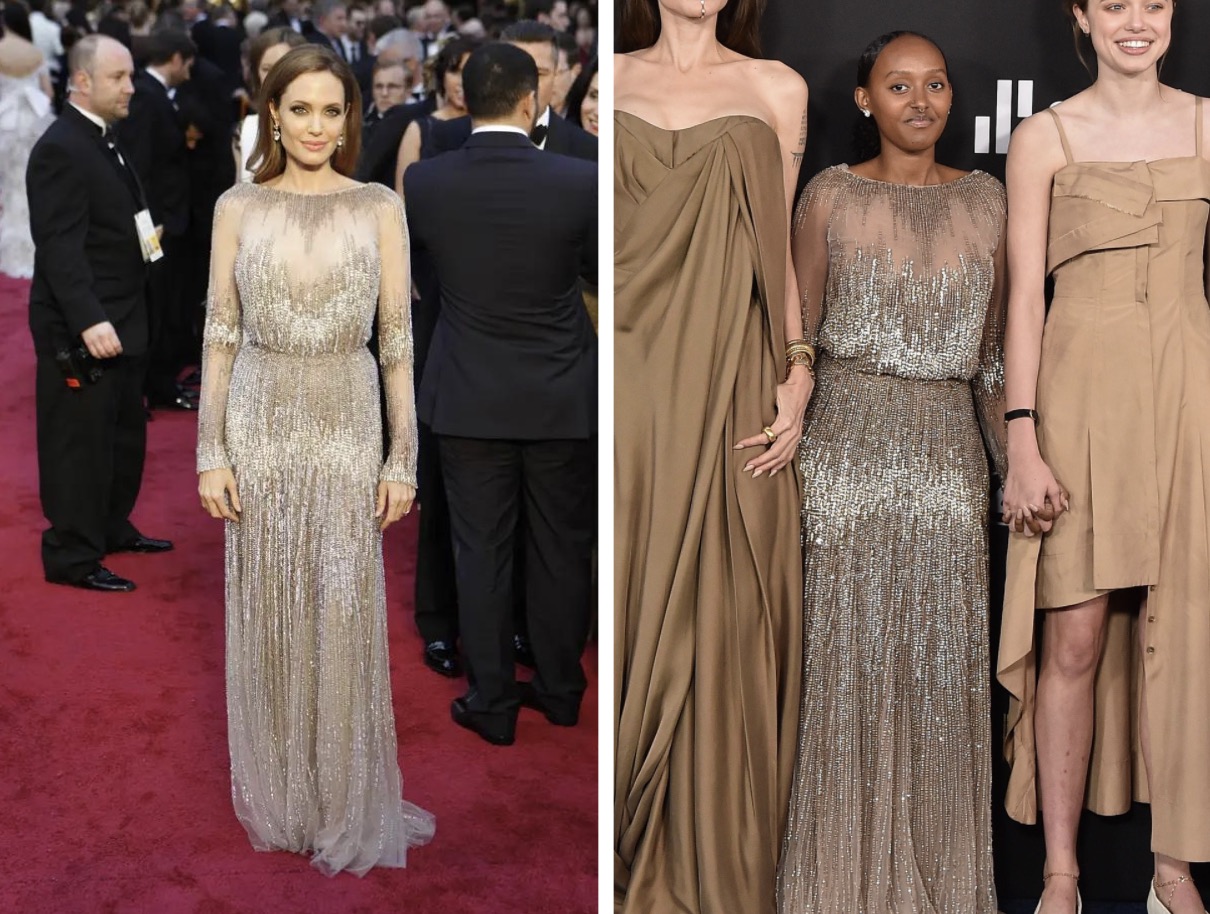
At a party, a friend says, “I have seen you wear that gown many times before.” Don’t get defensive. Choose pride instead!
- Love preloved
Buy you must, then choose that preloved store at the street corner rather than the big super store in the mall.
- Don’t mind mending
A button fallen off the shirt, a spec of a hole in that pretty frock does not call for a new shirt or frock. Mend your ways, to mend clothes and wear them.
- Breakup with impulse shopping
Shopping is an addiction; the adrenaline rush you get on a shopping spree is short-lived. Break up with it and never ever look back. Rent and have an ‘infinite wardrobe’ or if we haven’t said it enough,…
- Invest
If you must go shopping, buy only if you are completely convinced and like its colour, fit and style. Leave behind what you are not convinced about. Look at shopping for clothes like an investment and give it the time so you buy what’s best for you.
Singapore’s commitment in the fashion revolution
Singapore officially joined the Fashion Revolution in January 2014, founded in the wake of the Rana Plaza disaster in 2013. The Fashion Revolution Singapore team engages through social media campaigns and events. Their demand is greater transparency, sustainability and ethics in the fashion industry. Fashion Revolution is today one of the world’s largest fashion activism movements, mobilising citizens, brands and policymakers through research, education and advocacy.
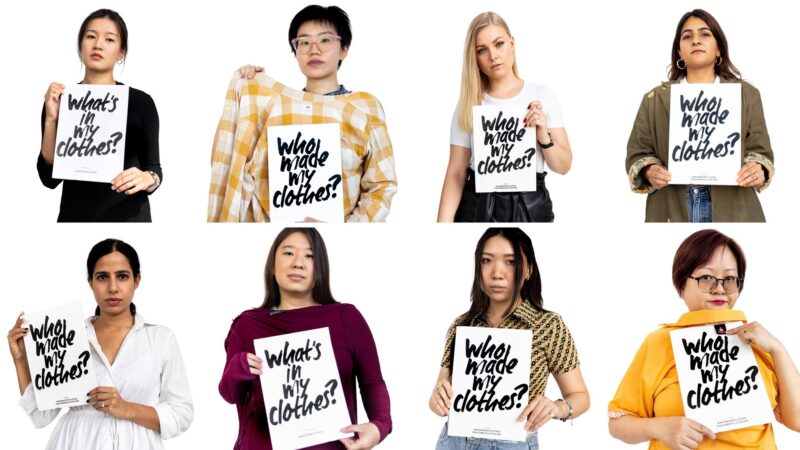
Fashion swapping is fashionable in Singapore – thanks to the efforts of organisations such as Fashion Pulpit, Swapaholic and Cloop, among others. These sites not only participate in markets that happen island wide but also encourage e-swapping.
Clutter whether in the mind or in the cupboard results in confusion and unhappiness. According to Marie Kondo, the famous Japanese organising consultant and author of 4 books on organising, one should categorise and declutter things, keeping only those that spark joy. For anything to spark joy in us, it needs to mean something to us. A souvenir, a picture, a book given by a friend evoke so many positive thoughts. Shouldn’t that be all that we are surrounded by – Positivity!
Decluttering though seems easier said than done. The spoilers are many: sales, new collections, occasions, de-stressing, impulse and the list goes on. But keep your resolve- and remember change begins with you.
So go forth and convert. Make minimalism your lifestyle, a style you don’t need to explain or feel guilty about because you are doing your bit to save Mother Earth. You are ensuring the future is better than the past and that posterity will still be able to see a beautiful world. Be proud and spread the word to your friends, family and specially the little ones, because they are the baton carriers in the race. Even if one person takes the leap of faith because of you, you have made a difference!
Related Articles

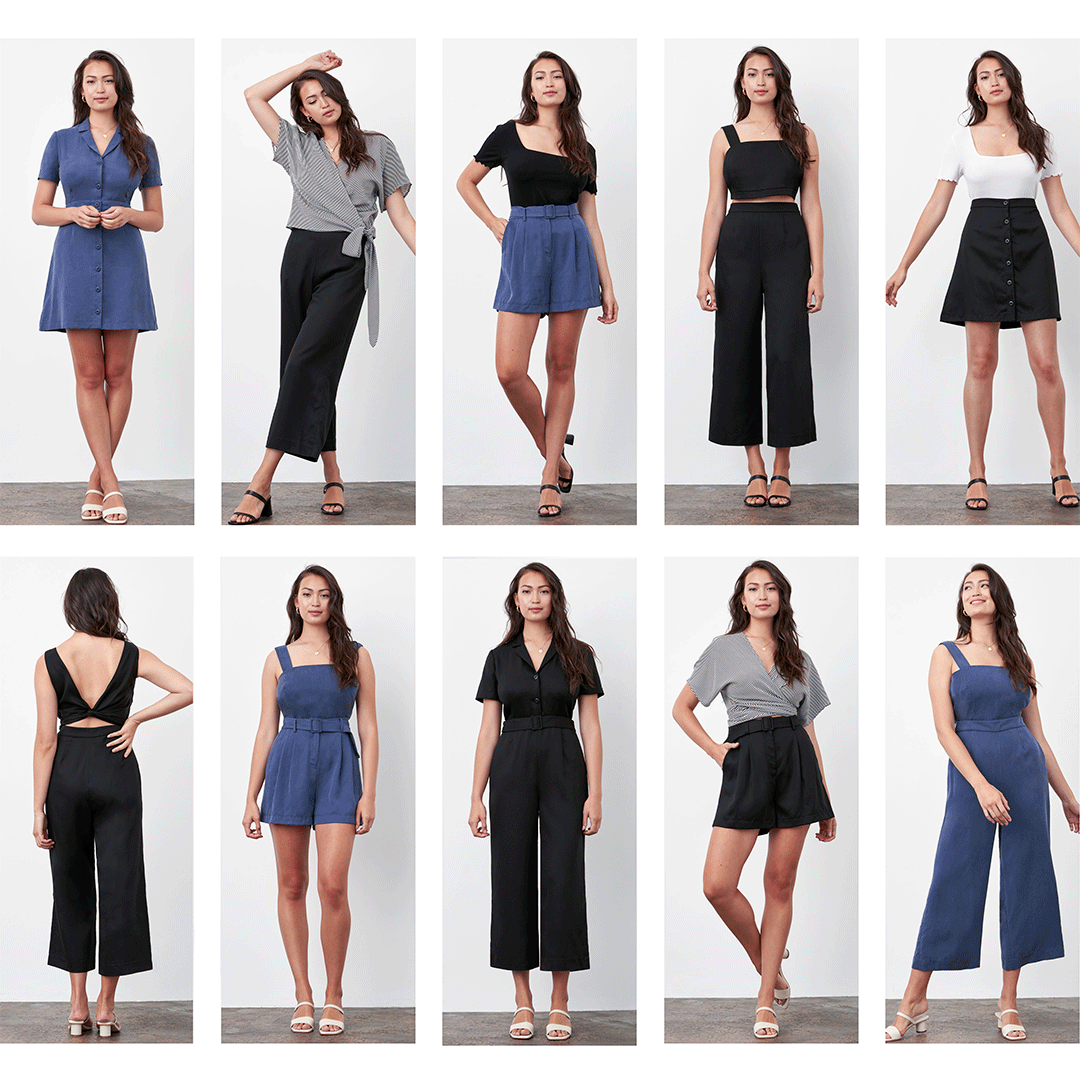
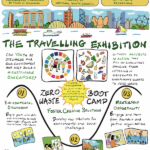

0 Comments